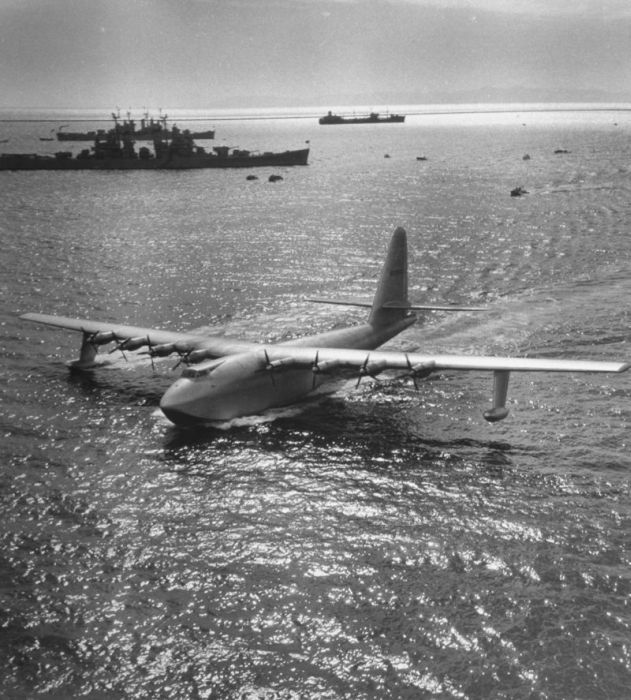|
|
History: Spruce Goose, Hughes H-4 Hercules
|
While Kaiser had originated the "flying cargo ship" concept, he did not have an aeronautical background and deferred to Hughes and his designer, Glenn Odekirk. Development dragged on, which frustrated Kaiser, who blamed delays partly on restrictions placed for the acquisition of strategic materials such as aluminum, but also placed part of the blame on Hughes' insistence on "perfection." Although construction of the first HK-1 took place 16 months after the receipt of the development contract, Kaiser withdrew from the project.
Hughes continued the program on his own under the designation "H-4 Hercules", signing a new government contract that now limited production to one example. Work proceeded slowly, with the result that the H-4 was not completed until well after the war was over. It was built by the Hughes Aircraft Company at Hughes Airport, location of present day Playa del Rey, Los Angeles, California, employing the plywood-and-resin "Duramold" process – a form of composite technology – for the laminated wood construction, which was considered a technological tour de force. It was shipped on streets to Pier E in Long Beach, California by a company specializing in house moving. The Spruce Goose was moved in three large sections consisting of the fuselage and each wing, and a fourth smaller shipment containing the tail assembly parts and other smaller assemblies. After final assembly a hangar was erected around the flying boat with a ramp to launch the H-4 into the harbor. This building became the first climate-controlled building in the United States.
In 1947, Howard Hughes was called to testify before the Senate War Investigating Committee over the usage of government funds for the aircraft.
During a Senate hearing on August 6, 1947 (the first of a series of appearances), Hughes said:
|
|









